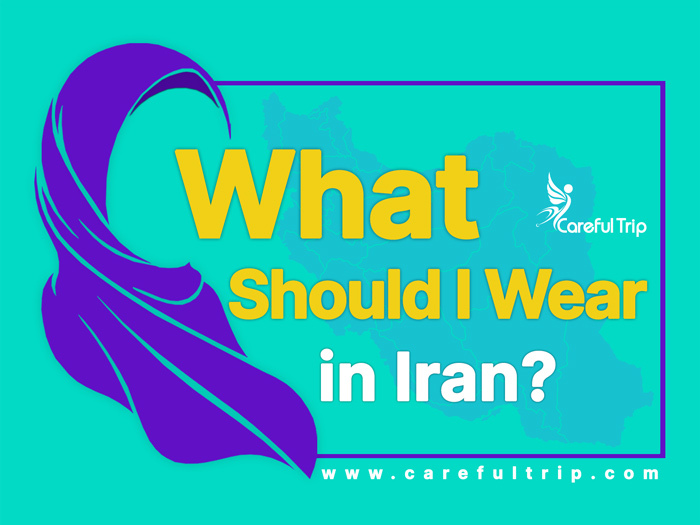
Every female tourist from all over the world considering a trip to Iran may be curious about what it’s like to appear in a nation with a rigorous dress code or the so-called “compulsory hijab” rule. Many people who are unfamiliar with Iran immediately associate the word “compulsory hijab” with women wearing chadors, burqas, and niqabs. This originates from the same misunderstanding that existed when Israeli Prime Minister Binyamin Netanyahu made the major error of judgment of many others that Iranians are not permitted to wear jeans!
These individuals frequently equate Iran to Saudi Arabia in terms of dress regulation, where the majority of women wear black chadors with full-face veils and presume that female visitors to Iran must dress similarly. However, this is not the reality.
A picture, after all, is worth a thousand words. A quick glance at the photographs on the Internet will tell you all you need to know. As you can see, the way many local girls dress in public areas refutes the widely held belief that women’s clothing choices are severely limited.
For more information, read:
What to Wear in Iran as a Female Traveler?
As a female coming to Iran, apart from covered usual dresses, the most significant item of clothing to consider is a headscarf, which you may find strange to wear. However, many people eventually adapt to it. If you consider wearing the headscarf a regulation, everything will make sense. Every country has its own law to run the society. For example, on the opposite side of Iran, France used to forbid any kind of Hijab in public under the flag of democracy and one of its belief systems “Secularism”. However, the hijab in Iran doesn’t follow a stringent situation at all. By looking at photos of society in Iran or searching for information, you will see that there is no special seriousness in observing the headscarf among Iranian people and the government has nothing to do with the people.
Even though the Iranian dress code requires women to wear headscarves, the scarf does not need to fully cover the head. In reality, a loose-fitting piece of headwear is sufficient for women to comply with the country’s dress requirements.
For those who are not used to using a scarf, it will be difficult to keep the scarf on the head at first, but gradually you will learn how to control it.
For more information, read:
Visitors, on the other hand, are allowed to wear loose blouses. Fortunately, when it comes to Hijab, foreigners are not typically viewed as severely as Iranian women. Wearing anything up to your knees, such as a skirt, is advised.
You might not have to wear socks all the time, and wearing sandals is acceptable. If you’re visiting Iran in the spring or summer, you don’t need to pack your socks. Of course, buying them in Iran is another option, which is cheaper than everywhere.
If you are curious about what to wear and how to wear it in winter in Iran, you should know that it is almost like any other season of the year. Since you can wear a hat with your shawl, it’s great to feel warm while following the dress code in Iran.
While Iran is a traditional country where women must always be clothed in public, this is not something you should worry about.
For visitors and foreigners, Iranian clothing regulations are not strictly followed. For example, when you wear a scarf with thin pants, don’t stress if your hair falls out of the scarf.
Most adolescent females, except a tiny number of older women, merely cover the tops of their heads.
For more information, read:
What about the body and legs?
A general rule is that everything you dress on your upper body should be capable of reaching or somewhat beyond your knees. You may wear trousers or pants that cover your whole leg down to your feet. Even hip huggers are accepted if you wear a tunic or ‘manteau’ that covers your mid-thighs. (Manteau is a French term that refers to a gown or cloak, and is now frequently used in Iran to define a set of closely comparable costumes worn by women in different styles.)
Short-sleeved clothing is not authorized, since your arms must be covered down to your wrists. The looser the garments, the better, because you will be more comfortable wearing and adjusting them. Particularly if you want to see some of the city’s attractions, and you can feel confident that you will completely comply with the county’s laws and conventions.
Covering the Hair
Women in Iran are required to cover their hair. However, they can choose from a range of headcovers. A shawl or headscarf might work for a tourist, and there are several ways to wear one. You may find a variety of tutorials on how to fold a headscarf, hold it in position, and use it most conveniently on the Internet.
It is not necessary to cover your hair all the way to your forehead. Many ladies and young girls wear their hair half-up and display a few strands in Iran. A ponytail would assist keep the shawl in line, and clip-on headpieces are available in Iran to let you make a bun or high part of your hair.
It is not necessary to wear a scarf around your neck. In reality, there is a really adorable method to wear your headscarf with your neck visible, which is similar to a turban and is considered the greatest way to wear a headscarf in Iran during the hot summers.
If your shawl falls, do not be afraid. It happens all the time, and there is tolerance.
These limitations for Hijab are not required when you are in a private environment. When you leave your place to go to the lobby or reception, remember to dress appropriately according to the dress code.
What Do Men Wear in Iran?
In Iran, there are fewer norms and prohibitions regarding the dress code for men. They can dress casually, which is similar to that worn in other nations. Shorts, on the other hand, are not permitted in public areas. Only at beaches and sports facilities can men wear shorts. T-shirts are still ok, but sleeveless vests can be a problem.
For more information, read:

